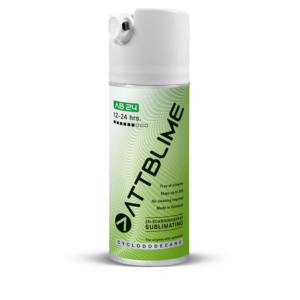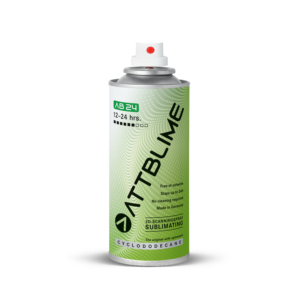
ATTBLIME® CYCLODODECANE
Cyclododecane is a cyclic hydrocarbon with the chemical formula C12H24. It has a waxy texture and a mild, pleasant odor. Cyclododecane is commonly used in the fields of art, conservation, and restoration because of its unique properties.
In art, cyclododecane is used as a temporary fixative for delicate materials such as pastels, charcoal, and graphite. It can be sprayed (ATTBLIME AB24) onto the artwork to hold the materials in place while the artist works on other parts of the piece. Once the artwork is complete, the cyclododecane can be easily removed with a soft brush or cloth without damaging the surface of the artwork.
In conservation and restoration, cyclododecane is used to protect fragile surfaces during transportation or handling. It can be applied as a thin layer to ceramics, glass, and other fragile materials to prevent damage during shipping or restoration. Cyclododecane is also used as a mould-making material in the restoration of sculptures and other artworks. It can be applied to the surface of an artwork to create a negative mould that can be used to make a replica of the original.
Another interesting use of cyclododecane is in the preservation of fossils. It can be used to coat fossils, creating a protective layer that prevents them from being damaged or destroyed during excavation and transportation.
Overall, cyclododecane’s unique properties make it a versatile tool for artists, conservators, and restorers. Its ability to act as a temporary fixative or protective coating without damaging delicate materials makes it an important resource in these fields.
Additional information
| Physical Properties | Appearance – Fine white free-flowing powder |
|---|---|
| Chemical Properties | Key Ingredient – 100% Cyclododecane |
| Health Protection | Free from titanium dioxide (TiO2), talc & n-hexane |
| Recommended Usage | Application – Art, Conservation & Restoration *test patch before use. |
| Storage | Storage Temperature – 41°F to 113°F / +5 °C to +45 °C |
How it Works
Cyclododecane works by forming a thin, waxy layer on the surface of materials. This layer is able to hold fragile materials in place or protect delicate surfaces from damage without altering their appearance or properties. Cyclododecane is able to do this because of its low vapour pressure and melting point. When cyclododecane is applied to a surface, it melts and spreads out to form a thin layer. As it cools, it solidifies and forms a waxy coating that is able to hold delicate materials in place. The layer of cyclododecane is temporary and can be easily removed without damaging the surface of the material. This makes it ideal for use as a fixative in art or a protective coating in conservation and restoration. Cyclododecane is also useful in creating negative moulds of sculptures or other artworks. When applied to the surface of an artwork, it can be used to create a negative impression that can then be used to make a replica of the original. This is possible because cyclododecane has the ability to solidify and maintain its shape, making it an excellent material for creating moulds. Overall, cyclododecane works by forming a temporary, waxy layer on the surface of materials. Its low vapour pressure and melting point allow it to maintain its shape and hold delicate materials in place without altering their appearance or properties.GHS
Bulk Non Hazardous



